Pesto alla Genovese is a traditional recipe for Italian basil pesto sauce made with a mortar and pestle. Toss it with pasta, make a sandwich, or dress a pasta salad - this aromatic sauce is both versatile and satisfying.

Jump to:
What is pesto alla Genovese
Pesto alla Genovese is a traditional Italian sauce that originated in the city of Genoa, Northern Italy. Made with local fresh ingredients, it became a staple in Genovese cuisine and soon gained popularity in all over the world.
If you ever tried a real pesto in Italy, you know that the store-bought one only resembles the real sauce. Freshly made pesto is undeniably the best pesto you can have.
While making it, it will fill the air in your kitchen with so many aromas. Imagine, how it can transform your dish.
The word "pesto" comes from the Italian word "pastare", which means "to crush" or "to pound". That is why authentic pesto is made by crushing the ingredients using a mortar and pestle into a flavorful and vibrant paste.
This type of pesto will be smooth and creamy, yet slightly coarse. The crushing process releases the oils and flavors from basil, pine nuts, and garlic without damaging the volatile compounds of basil.
Grinding also breaks down the cell walls of the ingredients gradually, resulting in a well-balanced flavor profile.
That's why, if you are making it in a blender or a food processor, it is important not to over-blend it, as it can make the sauce too watery, thin, and less flavorful.
So if you have a marble mortar and pestle, it's time to put this tool to work. But do not worry if you do not have the mortar, food processor or blender works too.
I recently used my food processor to make this quick lemon and basil pesto recipe and it turned out very delicious (much better than any jarred one).

What you will need
You can find the ingredients' quantities in the recipe card below.
Ingredients
- Fresh Basil - As a main ingredient, basil should be fresh without any brown spots. If you are in Italy, Genovese basil is the one to use. But any other type of basil works great too.
- Pine nuts - European pine nuts are used in Italy, they have a specific flavor profile. You can find them at any grocery store in the US. Pine nuts add creaminess and sweetness to the sauce.
- Hard cheese - Parmigiano Reggiano cheese, Grana Padano cheese, or Pecorino Sardo cheese( sheep's milk cheese) are the best ones to make a true Italian pesto. You can also use the popular in the United States grated Parmesan cheese instead.
- Extra virgin olive oil - it serves as a binder and flavor enhancer. the quality of olive oil matters. Use a good quality extra virgin olive oil.
- Sea Salt - crushed with garlic at the beginning and can be adjusted to taste at the end.

Equipment
As I explained above, they use mortar and pestle in Italy to make an authentic Pesto alla Genovese. I have a ceramic one and while it does the job, crushing basil leaves without chopping them first is not very easy.
If you have a large marble or granite mortar (the best ones to make pesto), no need to chop the leaves, as it does the job much faster.
Alternatively, you can use a food processor or a blender to make pesto.
You can even make it with a knife. Simply chop the ingredients very finely with the knife and then use the flat side of the blade to smash them for oil to get released. It won't be very fine and smooth, but will still taste amazing and better than any other store-bought pesto.
How to make pesto Genovese
Pick the basil leaves off the stems. Rinse them well under cold water and part dry with a towel. Thick stems are very fibrous and it will be hard to turn them into a smooth paste with the mortar. You can compost the stems instead of throwing them away.
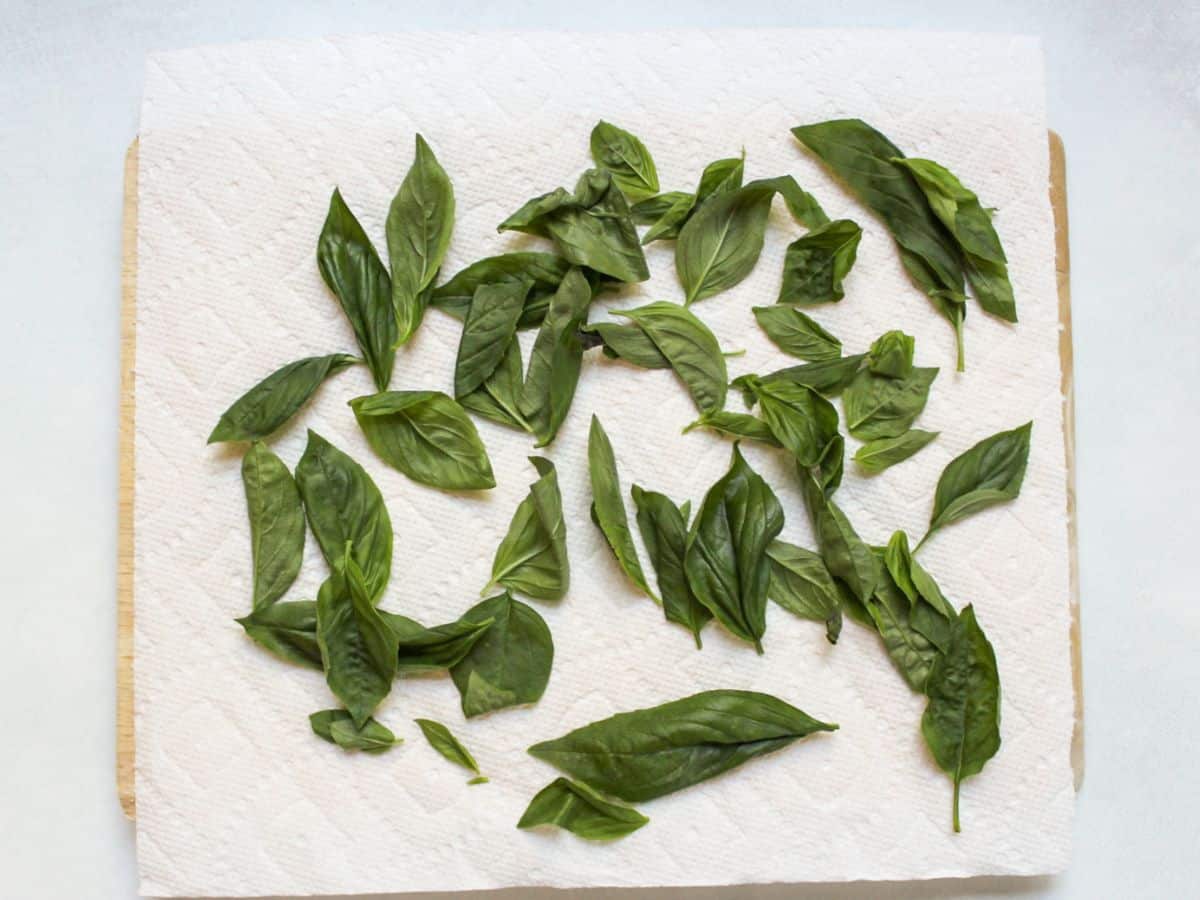
Roll and chop the basil leaves finely, if you are using the small ceramic mortar. This will expedite the process.
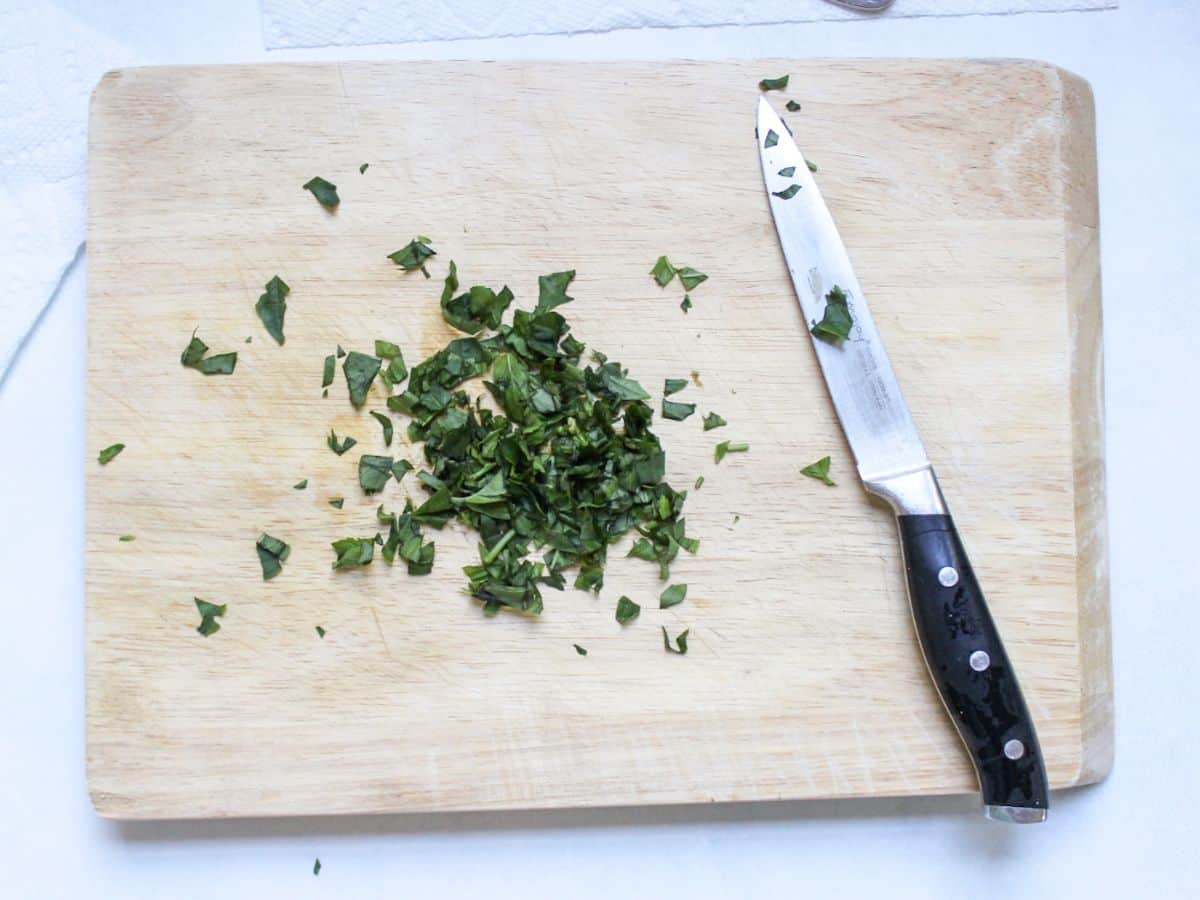
First, add two garlic cloves and a generous pinch of salt to the mortar. Smash them into the paste using the pestle.

Now, add pine nuts. Grind them with the garlic into a thick paste, similar to the peanut butter.
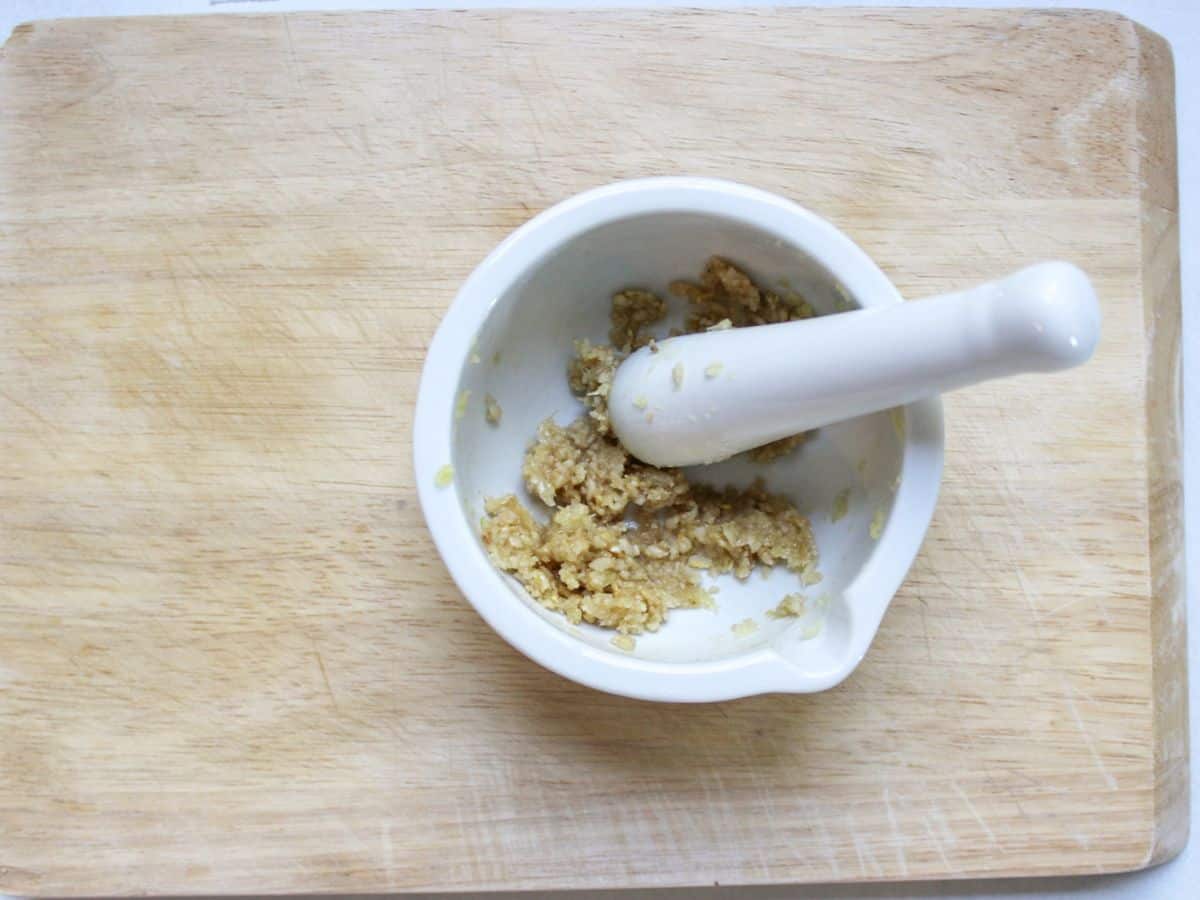
Start adding chopped basil (or whole leaves), one handful at a time. Grind and crush the leaves until they break down and release the flavorful oils.
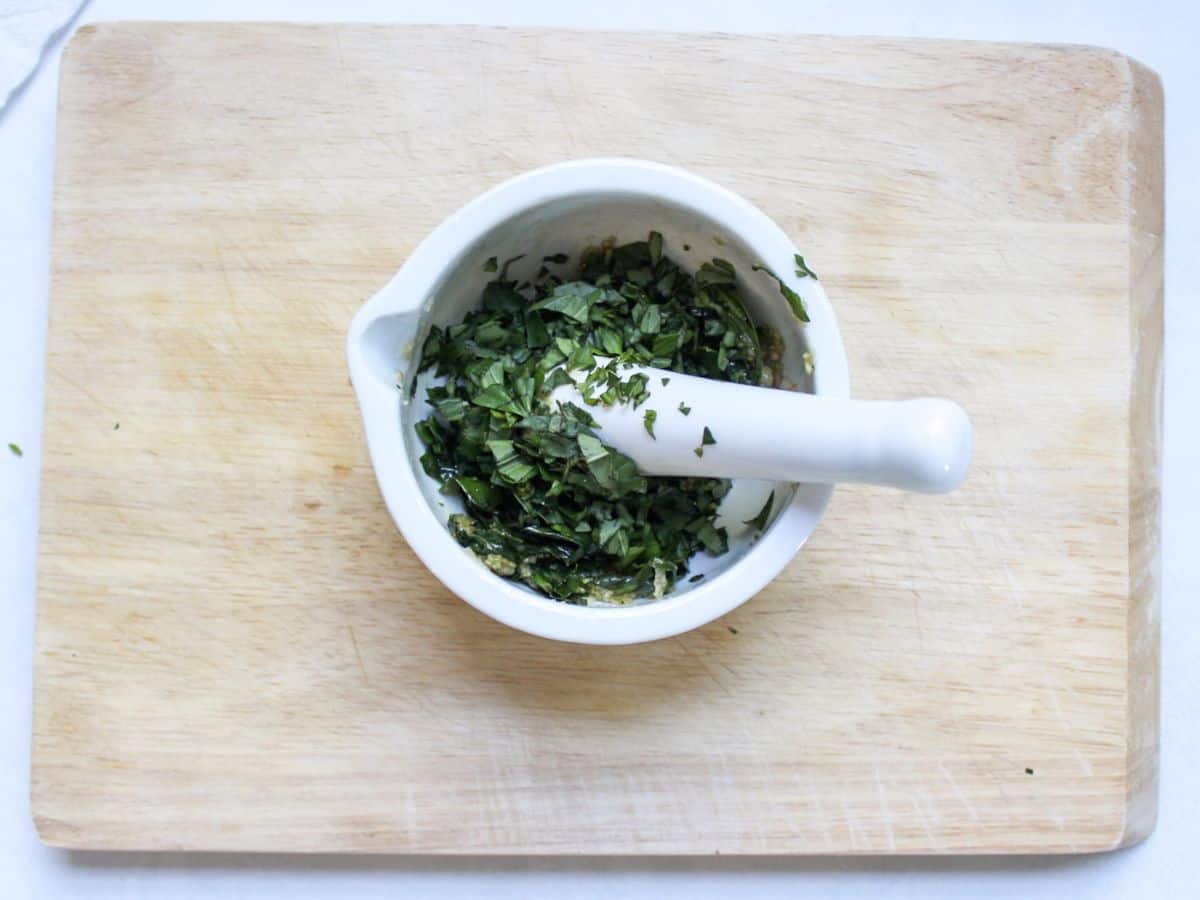
Repeat with the rest of the basil. Your kitchen will start to smell so good by now.

Incorporate grated Parmigiano-Reggiano into the mortar and mix it in using a circular motion with the rest of the ingredients.
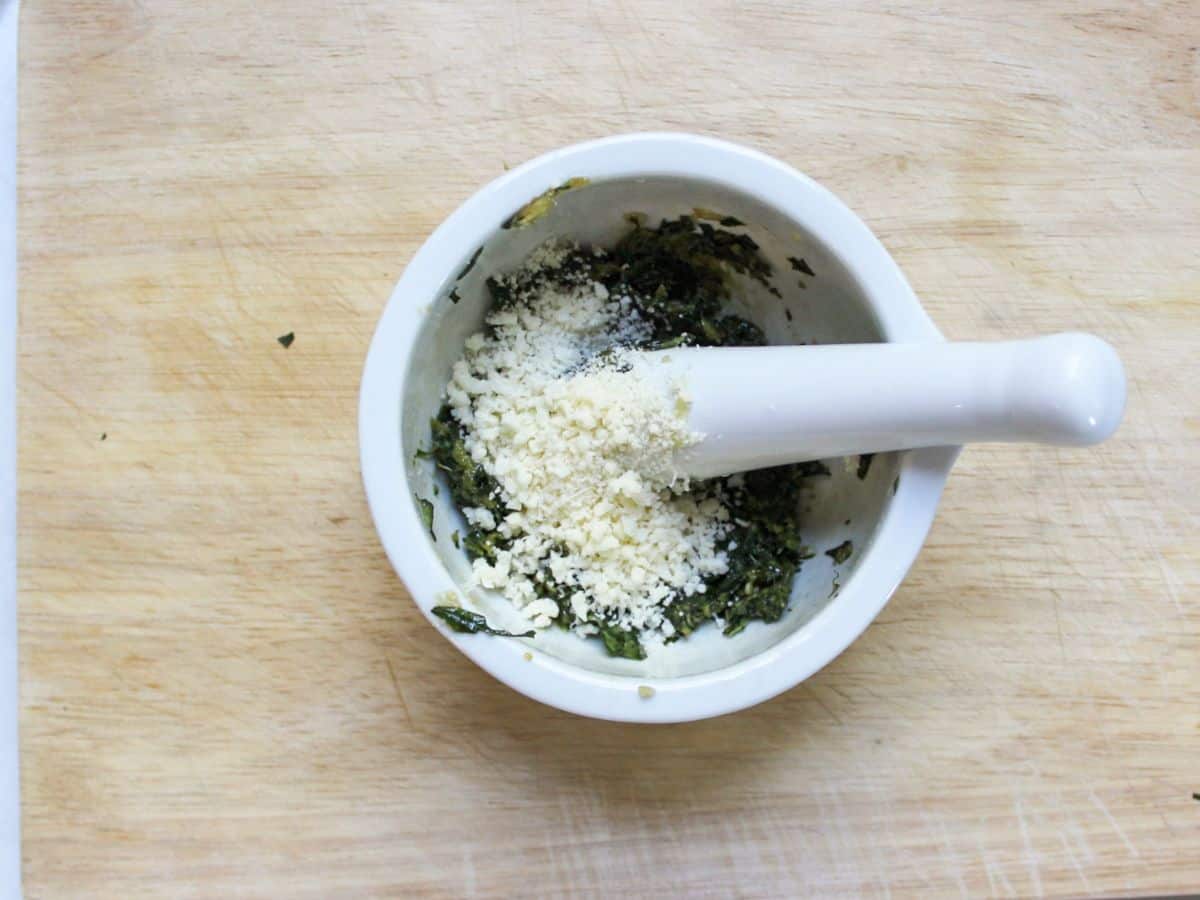
As you continue siring, gradually drizzle in the olive oil until the sauce reaches the right consistency.

Taste the pesto and add more salt if needed.
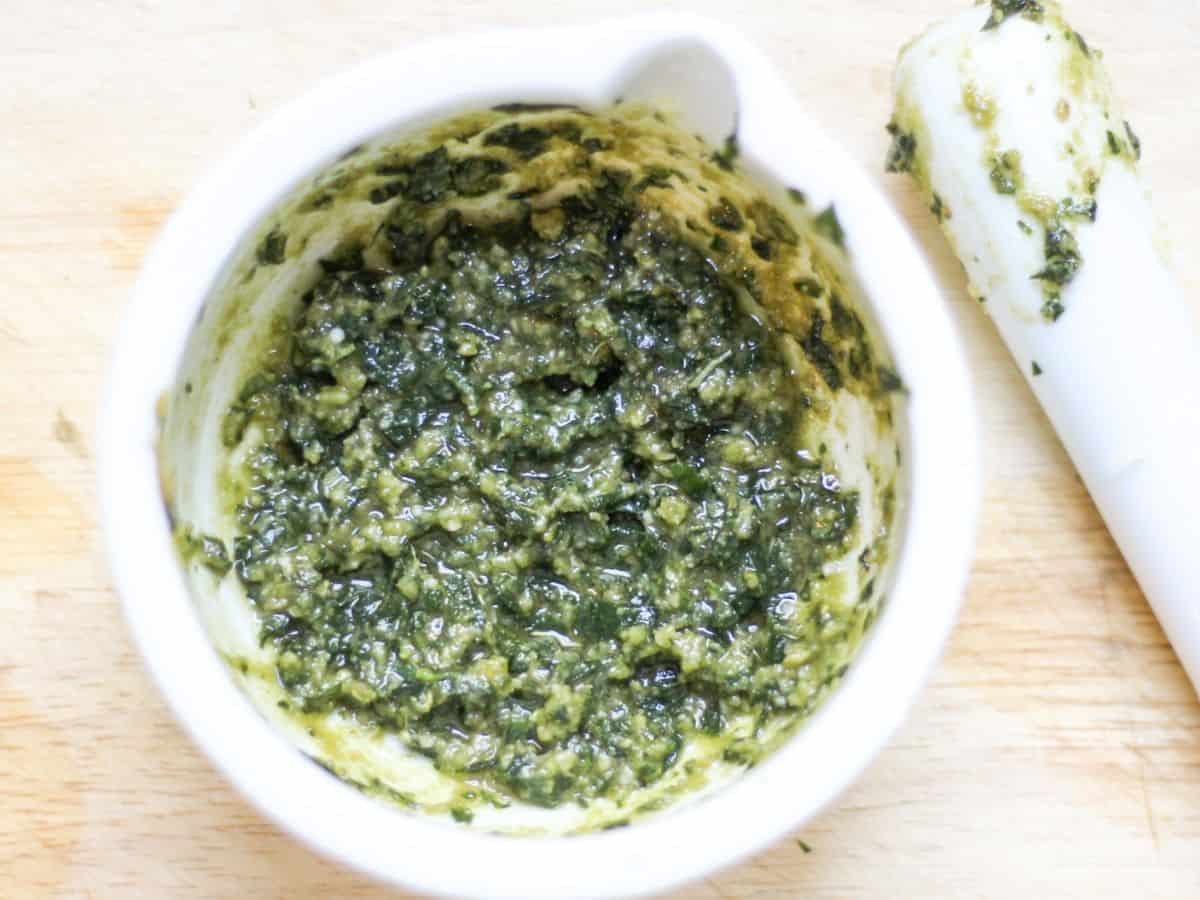
Recipe tips
- Use fresh basil leaves, make sure there is no brown spot in the leaves and the herb is fragrant.
- If you do not have pine nuts, use walnuts instead.
- Get a quality extra virgin olive oil, it can be pricey but so worth it. I always keep one to use only for sauces and salads.
How to use pesto
My favorite way to use a freshly made pesto is to toss it with al dente linguine pasta or potato gnocchi, adding a generous sprinkling of freshly grated Parmigiano-Regginano cheese on top.
Spread it on slices of crusty bread and top it with slices of fresh, juicy tomatoes for a fun bruschetta idea.
You can also use pesto as a dressing for pasta or vegetable salads.
Make ahead
When stored properly, pesto will last in the fridge for up to 5 days. Keep it in an air-tight container or a jar. You can add a thin layer of extra virgin olive oil to preserve the color and freshness.
Frequently asked questions
Yes, you can freeze pesto. Transfer it into a freezer-safe jar or ice cube tray, leaving some space for expansion. Freeze pesto for up to 3 months. You can thaw it overnight in the fridge or add it directly to a hot dish.
To prevent the pesto from darkening, blanch the leaves before making the sauce, and store it in an airtight container. You can also add some lemon juice or e layer of olive oil on top to prevent it from oxidation.
Keep the fresh basil at room temperature in a jar filled with water, just like a flower bouquet. Refrigerating can cause leaves to wilt and turn black.
More Italian recipes
📖 Recipe

Pesto Alla Genovese (Italian Basil Pesto Recipe)
Equipment
- 1 mortar and pestle *see notes
- 1 Measuring Cup
- measuring spoons
Ingredients
- 4 oz (about 1 cup) lose basil leaves, packed
- ⅓ cup grated Parmigiano Reggiano
- 2 Tablespoons pine nuts (or walnuts)
- 2 garlic cloves
- ¼ cup extra virgin olive oil
- ¼ teaspoon salt, to taste
Instructions
- Separate the basil leaves from the stems and rinse them well. Pat dry the leaves gently using a clean kitchen towel.
- Chop the basil finely before adding to the mortar, for less work (especially if you are using a small ceramic mortar).
- Start by crushing 2 garlic cloves and ¼ teaspoons of salt into a paste with the mortar and pestle.
- Add 2 tablespoon pine nuts to the mortar and continue grinding and crushing them until the paste formed similar to peanut butter.
- Start adding chopped basil to the mortar in batches, a small handful at a time. Grind, smear and crush the leaves until the break down and release the flavorful oils. Repeat with the rest of the basil.
- Add ⅓ cup grated parmigiano reggiano to the mortar and mix it in using circular motion with the rest of the ingredients.
- Slowly pour in the olive oil while continuously grinding and stirring the sauce until it becomes one consistency. Taste pesto and add more salt if needed.
- Transfer pesto into an air-tight jar or toss it with a fresh pasta.

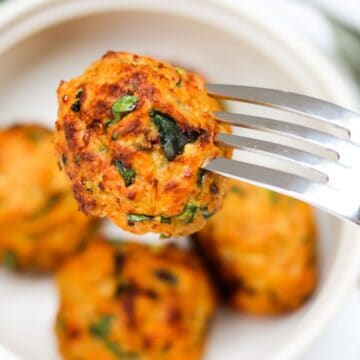
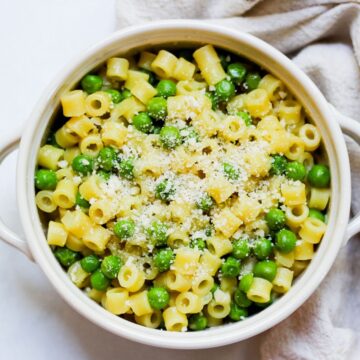
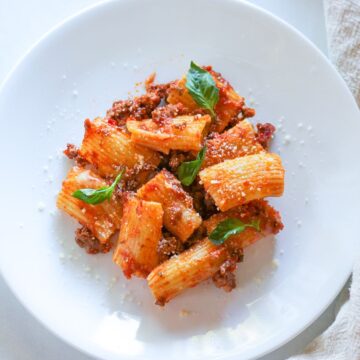
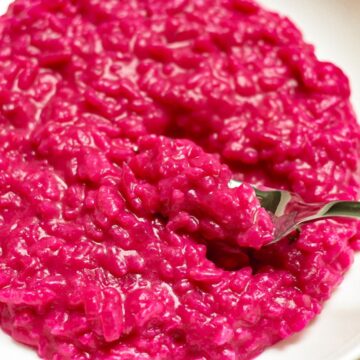
Comments
No Comments